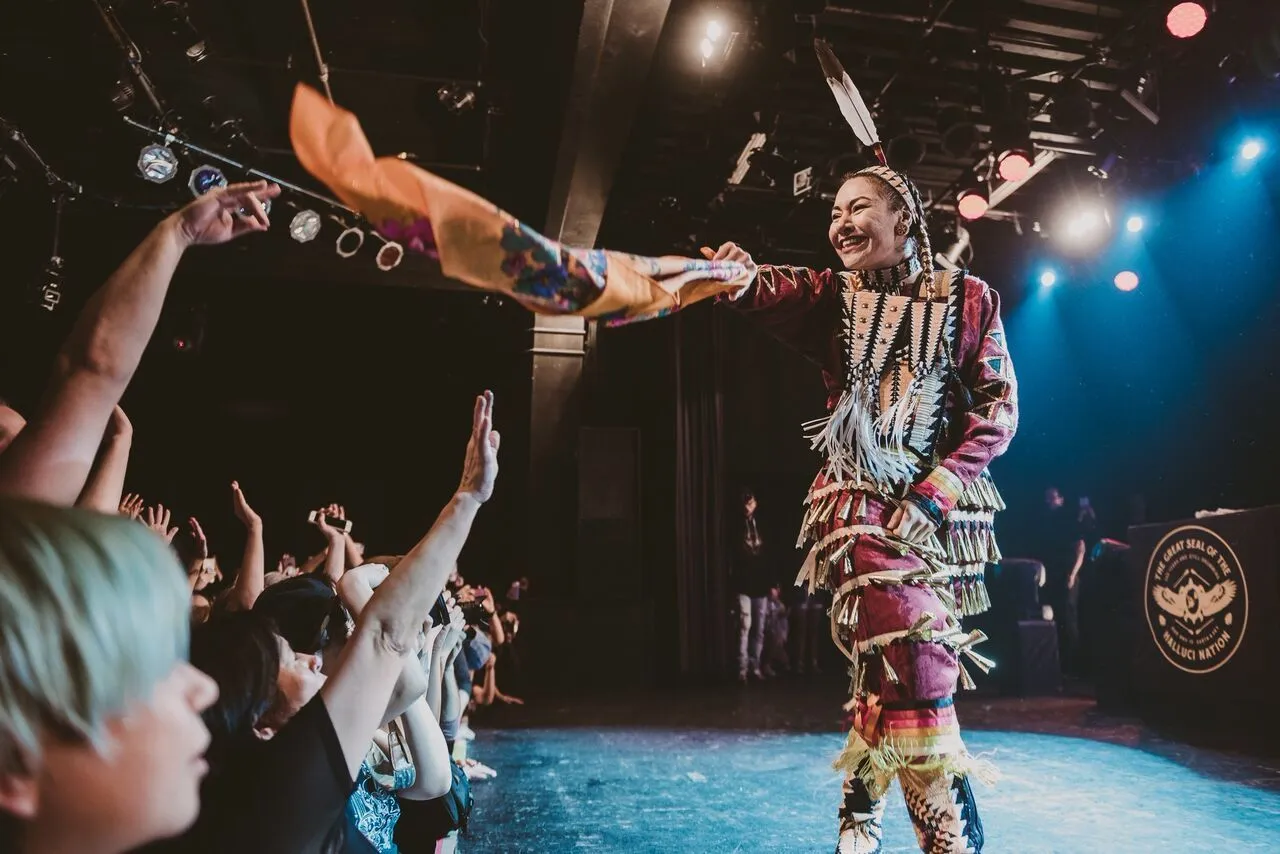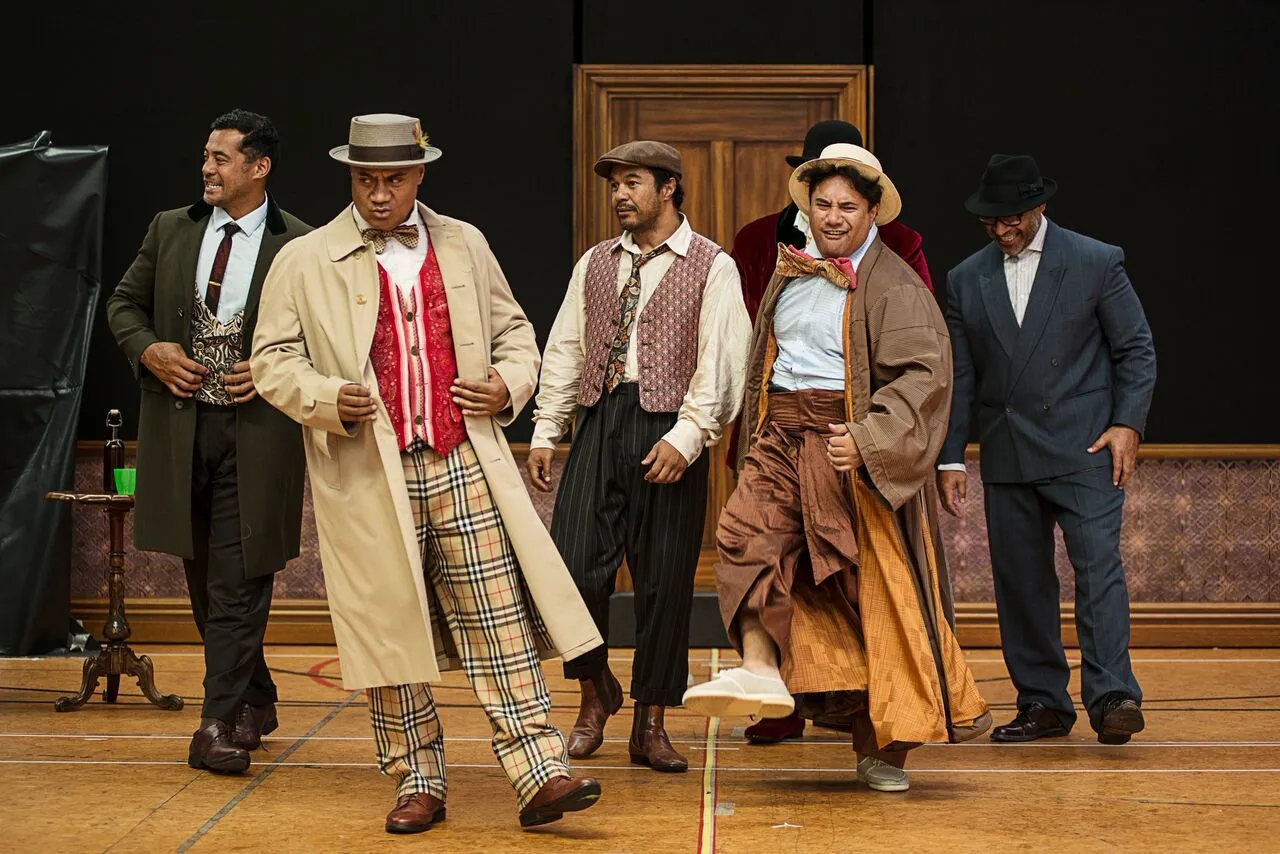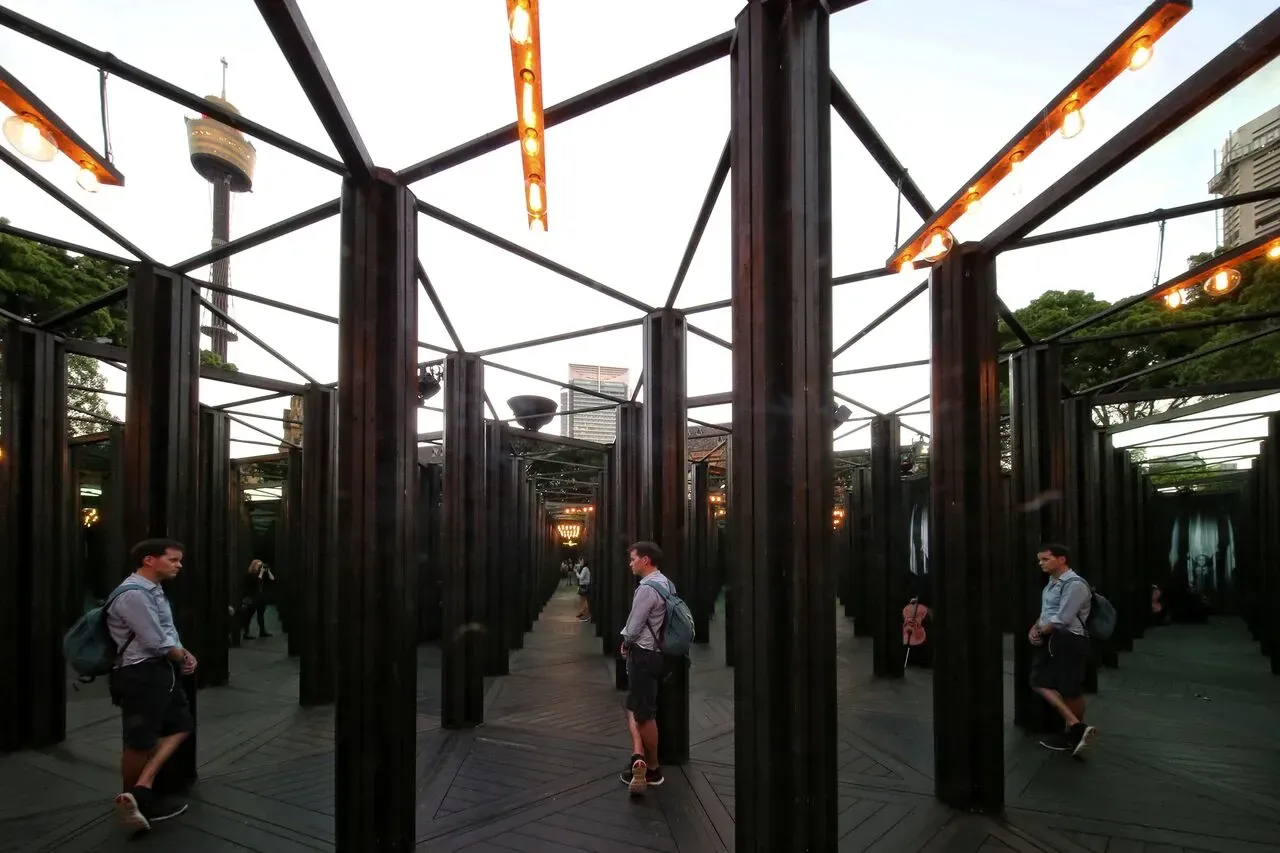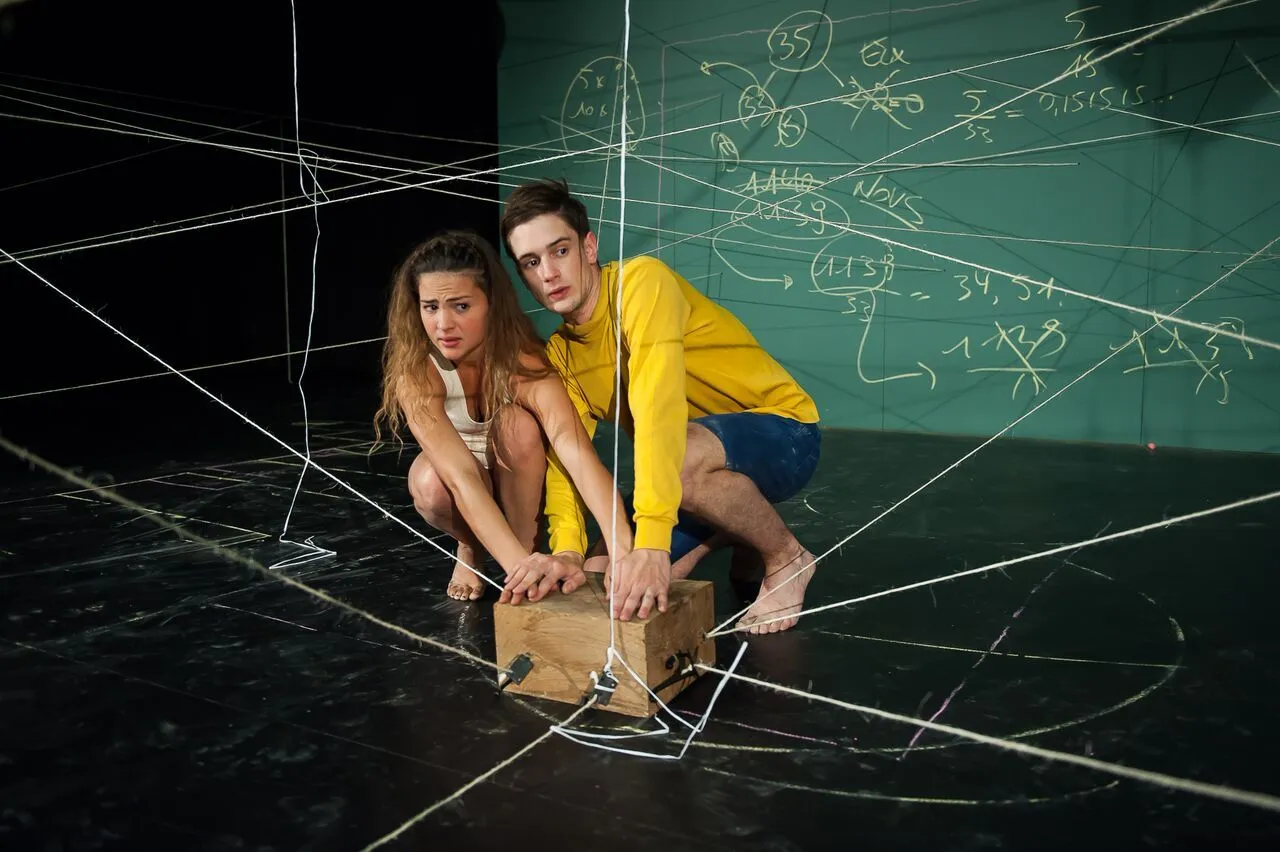Challenging the future

It’s a wrap! Bouquets and challenges for Auckland Arts Festival
It’s a couple of weeks since the Auckland Arts Festival 2018, Aotea Square and Silo Park have been returned to the seagulls for now. The permanent venues are busy with other shows; the next crop of festivals are already on sale. It’s wonderful to live in a city where it is impossible to keep up with everything.
And the Arts Festival and Fringe, with their positions at the start of the year, are the kickstarters for it all.
I went hard in the final week of the Festival. First up was the highly-anticipated Far Side of the Moon. Veteran actor Yves Jacques, no stranger to our shores, performed this piece created by Robert Lepage and scored by Laurie Anderson. Now 18 years old, the piece looks even further back, to the Russian cosmonauts and their exploration of space in the 1950s and 60s. Jacques plays all the roles, supported by a hidden puppeteer, and watching his vulnerable figure on stage adds to the feeling of loneliness and human fragility pervading this play.
Lepage’s hallmark stage magic was on full display. With a highly technical set featuring rotating mirrors, sliding walls and frequent changes in scale, the experience was as disorientating as going into space must have been for those early cosmonauts. But Lepage’s partly autobiographical piece is ultimately a meditation on earthbound relationships and the orbital distance between family members. It was slow moving but rewarded the careful viewer. Like the best European arthouse films, it had no clear beginning or end but sang on in my head long after I left the theatre.
The Naked Samoans Do Magic was magic of a different sort. Twenty years after Mario Gaoa, Robbie Magasiva, Dave Fane, Ia Heto Ah Hi, Shimpal Lelisi, and Oscar Kightley first hit the stage as the Naked Samoans, ‘the boys’ reunite for a new stage work co-created with The Conch theatre company and its director Nina Nawalowalo. Anyone who has been watching film, theatre and TV in the intervening 20 years will realise that The Naked Samoans are hardly the underachievers their characters in the show claim to be. But a premise is a premise and when the bros unexpectedly find themselves the inheritors of a Ponsonby villa with astronomical resale value, they explore it little suspecting it will lead to them rediscovering their arts mojo.
Although there was plenty of stage magic and the nostalgiometer was through the roof, I found myself missing the really dark elements of The Naked Samoans’ humour. Their comedy has never been shy to address the assumptions this country has about Kiwis of Pacific Island descent; this family show, while chocka with their classic humour, avoided really cutting observations about how a bunch of brown dudes inheriting a Ponsonby villa may have been received.
The ending, too, lacked real punch but did redeem itself by featuring ‘the next generation’ of Pacific talent, including students from the much missed Pacific Institute of Performing Arts (PIPA). The standout was the young actor who played the Rabbit. His deadpan, flawless navigation through the shifting walls and doors led us to the real magic: a reconnection of the Naked Samoans with their community, who have never forgotten their mahi. This work isn’t complex and doesn’t have to be; it’s a joyous celebration of established, well-loved tropes, which the audience responded to with love.
In contrast, Silo Theatre’s Body Double throws the side eye at notions of traditional ‘love’. The partnership of Karin McCracken, Julia Croft and director Eleanor Bishop – all recognised as fearless feminist theatre makers – is a cutting look at the stories we feed ourselves in literature, stage and screen. This is smart, funny theatre. Extracts from classic works such as Tolstoy’s Anna Karenina are mixed up with academic analysis, media reports and the lived experiences of the two performers. There is a lab-like atmosphere where Karin and Julia as versions of themselves play with notions of female sexuality via roleplay, live video feeds and activities with whipped cream. Unlike most shows where the internal worlds of the ‘characters’ are revealed, this show ultimately turns the gaze on the audience, asking ‘what do you really believe about women and their bodies, and why?’ We often don’t ask ourselves where we got our attitudes from. This show charmingly but insistently forces us to. Not an entirely comfortable experience, but I was very glad I went.
The next day I went to House of Mirrors, giving me a chance to reflect (sorry, couldn’t resist). With Miss 5 and Mr 4 in tow, or rather running circles around me, this was a great opportunity to get lost in art. I’m unsure of the definition of this experience as ‘art’. Designed by Australians Christian Wagstaff and Keith Courtney, this construction of 40 tonnes of weathered steel and 15 tonnes of glass paid homage to vintage mirror sideshows. Exploring it under blue skies, bumping into the same laughing faces as we tried to find our way out, it was very much a fun community activity. My kids, ignoring the instructions not to run or touch the glass, giggled from dead end to dead end and Mr 4 definitely didn’t want to leave when we finally found the well-disguised exit. In my mother duck/photo snatching mode I didn’t have much time for introspection – something I’ve come to expect from art. However, I did enjoy how the simplicity of mirrors – no lights or smoke, guys! – changed my perspective. So I guess it was art, of the happy interactive kind.
As it was the final day of the Arts Festival, we also experienced Whanau Day. Being at the Silo Park venue in daylight with other families and kids was a different experience to my lonely night a week prior. Mr 4 enjoyed a hip hop lesson with the ebullient Canadian dancer Angela Gladue; we found the giant water-filled ‘Pop Drop’ covered in bouncing children and heard glorious choral voices emanating from the giant tanks (‘it’s like singing in a linked series of bathrooms’, said my performer friend.) There was lots of clear information about the day’s programme, and when my kids tired of the cultural experiences, one of Auckland’s best playgrounds was right next door.
My final thoughts on the Festival? I only sampled a tiny part of it, but the programme did seem to have the broad scope it was intended to and cater for many different needs, with a spotlight on both NZ-grown works and international indigenous voices. It was ambitious to spread resources so wide rather than focusing on one central spot, and I understand the reasons why – accessibility and outreach.
Talking to other artists pre and post show, I did feel many of us missed having a single central meeting spot to catch up and plan or pitch future shows. We are spoilt for choice in Auckland with Citizen Q cafe and the Basement Bar (among many) as regular haunts, inside and outside of Festival time. But it's only at Festival time that we have the chance to mix and mingle with international artists or, for the lucky, programmers for other Festivals. Balancing delivery to audiences while nurturing the arts ecosystem locally is a continuing challenge, and one I’m sure we’ll see the Auckland Arts Festival continue to tackle.
I’m looking forward to next year.



